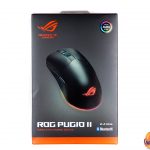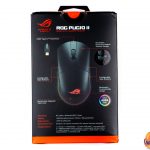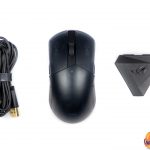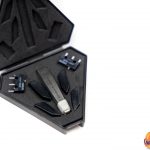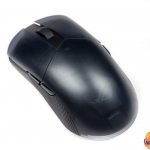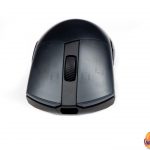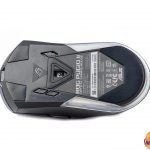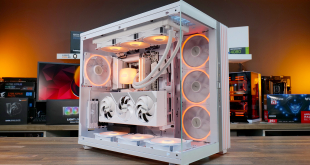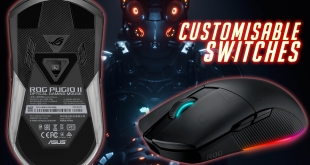
It has been over two years since we reviewed the original ASUS ROG Pugio, and today we are looking at the brand new Pugio II – featuring ‘tri-mode connectivity' via wired, wireless 2.4GHz & Bluetooth modes, on-board RGB effects and precision DPI control on the fly. This mouse reminds us of the 1990s with its transparent shell, reminiscent of Nintendo’s Gameboy, and we think it gives the mouse a lovely understated design. Just how good is the Pugio II? We find out today.
Specifications:
- Ambidextrous design
- Tri-mode connectivity
- Wired USB + 2.4Ghz Wireless + Bluetooth
- Cable & wireless dongle included
- Optical sensor
- 100 – 16,000 DPI
- 400 IPS
- 1000Hz Polling rate via wired & 2.4Ghz wireless
- 125Hz Polling rate via Bluetooth
- OMRON switches
- Dimensions 126 x 57 x 40 mm
- 100g without cable
- Changeable DPI via button or precise control via button press & scroll wheel
- On board RGB effects profiles via button combinations
- Transparent shell
- Included accessories box with button caps and replacement OMRON switches
- Customisable RGB logo insert
- ASUS Armoury II software
We don't yet have a confirmed price for the ASUS ROG Pugio II, but we will update the review when we have one.
Discuss on our Facebook page HERE.
Pros:
- Transparent shell is beautiful and reminiscent of the ‘90s.
- Tri-mode connectivity (Wi-Fi, wired & Bluetooth).
- Changeable OMRON switches & button caps.
- Accessories box included.
- RGB zones look great, especially under the transparent shell.
- Separate on-board RGB and DPI profiles without the need for software.
- ASUS Armoury II works well and easy to navigate.
- All grip styles are comfortable.
- Great sensor performance.
Cons:
- Specifically changing DPI with the DPI button and scroll wheel is tricky without clicking another button that then locks the DPI.
- RGB logo plate swapping isn’t very clearly explained.
- Not many calibration options within the software.
- Must take apart mouse to change magnetic button caps easily.
- Connectivity slider seems backwards to me, slide down to the Bluetooth logo to enable wireless or up to the Wi-Fi logo to enable Bluetooth.
KitGuru says: There's room for improvement, but considering the number of good features present – such as the tri-mode connectivity, excellent RGB coverage and a beautiful yet understated aesthetic – we think the Pugio II is worth buying.
 KitGuru KitGuru.net – Tech News | Hardware News | Hardware Reviews | IOS | Mobile | Gaming | Graphics Cards
KitGuru KitGuru.net – Tech News | Hardware News | Hardware Reviews | IOS | Mobile | Gaming | Graphics Cards


